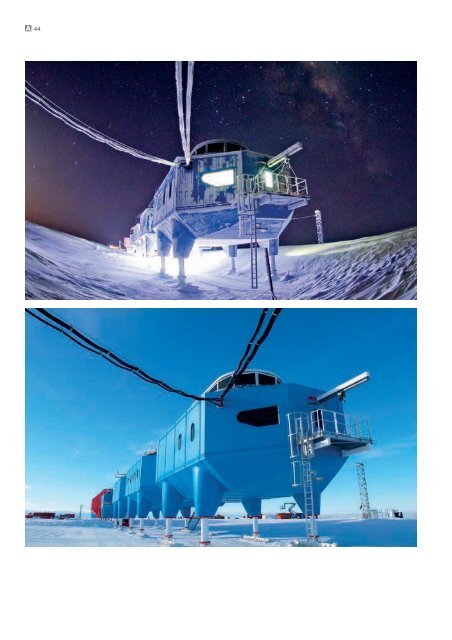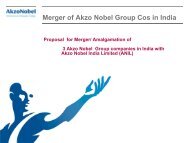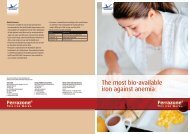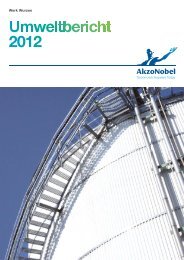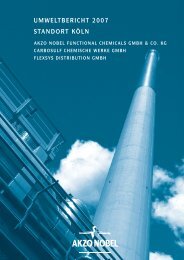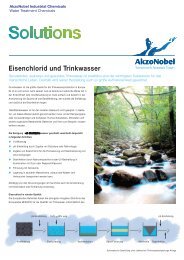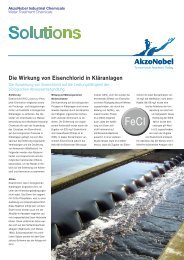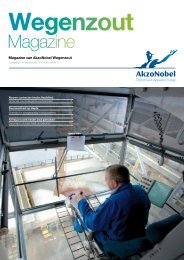tOMOrrOW's AnsWers tODAY - AkzoNobel
tOMOrrOW's AnsWers tODAY - AkzoNobel
tOMOrrOW's AnsWers tODAY - AkzoNobel
You also want an ePaper? Increase the reach of your titles
YUMPU automatically turns print PDFs into web optimized ePapers that Google loves.
22<br />
Our city skylines are changing. Where once there was a<br />
bland array of skyscrapers and tower blocks, peppered<br />
with the odd historic building or telecommunications<br />
tower, we now find ourselves in a space-aged, futuristic<br />
environment which wouldn’t look out of place in a sci-fi movie like<br />
Blade Runner.<br />
There can be no doubt that today’s architects have their eyes<br />
set firmly on both the functional and the fantastical. Whatever city<br />
you visit, there are buildings of different shapes, sizes, colors and<br />
types, featuring special materials or innovative solutions that make<br />
even the most unassuming office block look risqué.<br />
To the untrained eye, it might all appear a bit random. But there<br />
is some careful method to what at first appears to be design<br />
madness. You only need to take a look at the types of buildings<br />
which are winning some of the world’s major architectural design<br />
awards to appreciate what’s happening. Take the 2012 World<br />
Building of the Year, for example – the Cooled Conservatories at<br />
Gardens by the Bay in Singapore (pictured). Featuring two massive<br />
glass domes and 12 so-called Supertrees, it’s a visually stunning<br />
development which delivers a strong environmental message. It<br />
also just happens to feature around 50,000 liters of protective<br />
coatings supplied by <strong>AkzoNobel</strong>.<br />
Then there’s No.1 Bligh Street in downtown Sydney, Australia.<br />
Completed in May 2011, the office block has won a host of design<br />
and innovation honors. But what makes it particularly eye-catching<br />
is the fact that it looks, well, a bit ordinary. At 139 meters high, it<br />
certainly isn’t threatening the world’s tallest building record. And,<br />
while it has a pleasing elliptical shape, it’s not as iconic as buildings<br />
such as The Gherkin in London, or the cactus-inspired office tower<br />
currently being constructed in Qatar. In fact, it was a refusal to get<br />
drawn into the iconic which was highlighted as a key reason for the<br />
Sydney structure winning the 2012 International Highrise Award.<br />
So what’s going on? Alan Muse, Director of Built Environment<br />
Professional Groups at the UK’s Royal Institute of Chartered<br />
Surveyors, offers an explanation: “Modern building design evolves<br />
to meet the needs of society. Clearly, this is reflected in the importance<br />
of environmental and economic factors in modern building<br />
design, both through, for example, the use of energy efficient


